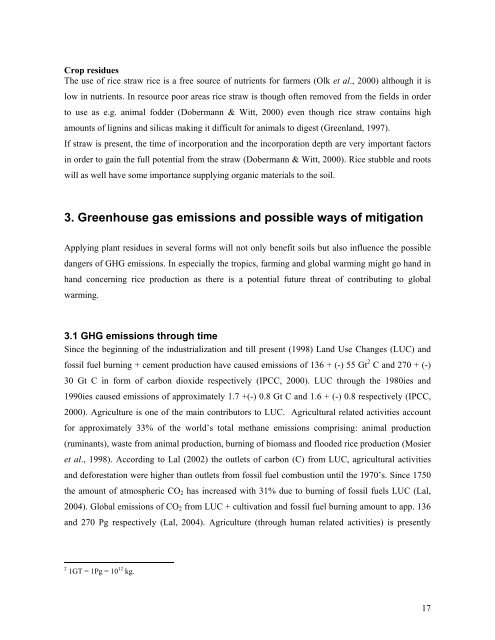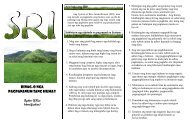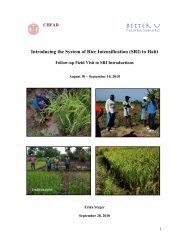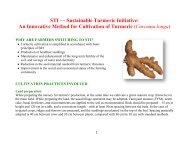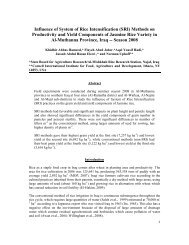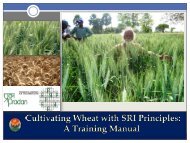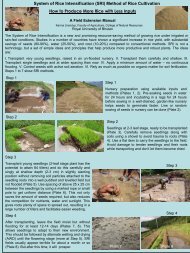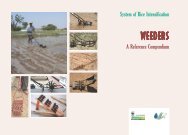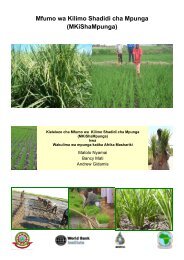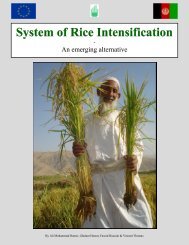EFFECT OF THE SYSTEM OF RICE INTENSIFICATION (SRI) ON ...
EFFECT OF THE SYSTEM OF RICE INTENSIFICATION (SRI) ON ...
EFFECT OF THE SYSTEM OF RICE INTENSIFICATION (SRI) ON ...
Create successful ePaper yourself
Turn your PDF publications into a flip-book with our unique Google optimized e-Paper software.
Crop residues<br />
The use of rice straw rice is a free source of nutrients for farmers (Olk et al., 2000) although it is<br />
low in nutrients. In resource poor areas rice straw is though often removed from the fields in order<br />
to use as e.g. animal fodder (Dobermann & Witt, 2000) even though rice straw contains high<br />
amounts of lignins and silicas making it difficult for animals to digest (Greenland, 1997).<br />
If straw is present, the time of incorporation and the incorporation depth are very important factors<br />
in order to gain the full potential from the straw (Dobermann & Witt, 2000). Rice stubble and roots<br />
will as well have some importance supplying organic materials to the soil.<br />
3. Greenhouse gas emissions and possible ways of mitigation<br />
Applying plant residues in several forms will not only benefit soils but also influence the possible<br />
dangers of GHG emissions. In especially the tropics, farming and global warming might go hand in<br />
hand concerning rice production as there is a potential future threat of contributing to global<br />
warming.<br />
3.1 GHG emissions through time<br />
Since the beginning of the industrialization and till present (1998) Land Use Changes (LUC) and<br />
fossil fuel burning + cement production have caused emissions of 136 + (-) 55 Gt 2 C and 270 + (-)<br />
30 Gt C in form of carbon dioxide respectively (IPCC, 2000). LUC through the 1980ies and<br />
1990ies caused emissions of approximately 1.7 +(-) 0.8 Gt C and 1.6 + (-) 0.8 respectively (IPCC,<br />
2000). Agriculture is one of the main contributors to LUC. Agricultural related activities account<br />
for approximately 33% of the world’s total methane emissions comprising: animal production<br />
(ruminants), waste from animal production, burning of biomass and flooded rice production (Mosier<br />
et al., 1998). According to Lal (2002) the outlets of carbon (C) from LUC, agricultural activities<br />
and deforestation were higher than outlets from fossil fuel combustion until the 1970’s. Since 1750<br />
the amount of atmospheric CO2 has increased with 31% due to burning of fossil fuels LUC (Lal,<br />
2004). Global emissions of CO2 from LUC + cultivation and fossil fuel burning amount to app. 136<br />
and 270 Pg respectively (Lal, 2004). Agriculture (through human related activities) is presently<br />
2 1GT = 1Pg = 10 12 kg.<br />
17


